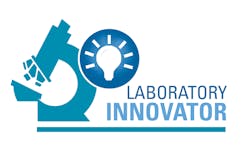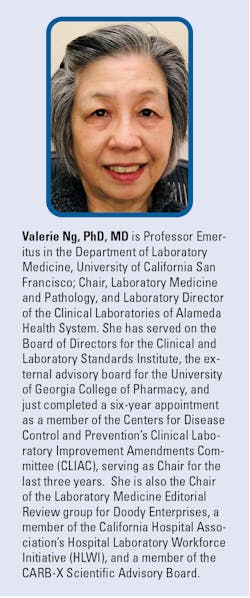I’ve learned automation provides tremendous value in reducing laboratory errors in the analytical phase. An automated specimen management system dramatically improves processes related to specimen receipt, processing, testing, storage, and retrieval. Automated test systems rely on acceptable quality assurance parameters (e.g., quality control, Westgard rules, delta checks) built into “autoverification” rules to determine when and which patient results can be released. It is primarily tests with manually performed steps remaining subject to human error.
But, as we all know, errors in laboratory testing occur most commonly in the pre- and post-analytical phases – the most common being mislabeled (label for Patient A is placed on specimen collected from Patient B, or “WBIT” — wrong blood in tube — as blood bankers like to say) or unlabeled specimens, specimens handled or transported incorrectly, or clinicians not interpreting results correctly.
So how to improve the pre- and post-analytical phases of laboratory testing?
- Specimen identification – use electronic health record (EHR) barcode scanning capabilities whenever possible as this process will weave together patient identifiers, test orders, correct collection containers and any special handling instructions (e.g., “protect from light”).
- Apply a specimen label to a specimen in front of the patient and engage them — ask them to verify their information is on the label and is correct.
- Test order – use a name understandable by users. As an example and at the beginning of the COVID-19 pandemic, we named our nucleic acid amplification test (NAAT) as “SARS CoV2 NAAT” and the antigen test “SARS CoV2 antigen.” The clinicians wanted the test names “Standard COVID” and “Rapid COVID” instead, which is how they thought of them. We changed the test order names accordingly and confusion on the clinical side vanished overnight.
- Result interpretation – in addition to age- or gender-specific reference ranges, include any special interpretive comments written in easily understandable English. We must remember most clinicians are not laboratorians and do not understand our language. And now patients have direct access to their lab results, so they too need to understand what they mean. Consider using trusted clinical colleagues or non-medical friends as editors for draft interpretations.
What are some of the biggest challenges you have faced this year or anticipate facing in your health system? What do solutions to those look like?
Well, we all know what today’s greatest challenge is — the absolute lack of personnel. Related is the loss of expertise with the retirement of experienced personnel. What are the solutions?
- Increasing the pool of interested applicants. This starts in middle school and high school. Get out there, partner with your Parent Teacher Associations and BE THERE on “career day” to drum up excitement about Clinical Laboratory Science and Laboratory Medicine.
- Didactic education – this is not a barrier today with the exception of creating more training schools where needed. Take advantage of CDC’s OneLab for high-quality online training — including virtual reality options — both for trainees and practicing folks who want refresher or training updates.
- Practical training – this is the current big hurdle. There are not enough remaining staff in clinical laboratories to “spare” to train students, let alone have education coordinators to link with the schools providing the didactic training. How do we solve this problem? It is a grassroots effort for each of us to work with our administrative colleagues and executives; request the funding of student(s) trainee positions; and the necessary piece, a staff clinical laboratory scientist (CLS) to coordinate. The return on investment (ROI) is a no-brainer; an analysis performed by a local colleague (Danny Arimboanga) demonstrated the ROI for training a CLS student was 6 months. D ’oh.
Have your laboratories struggled with any supply shortages, such as blood collection tubes? What strategies have you implemented to ensure adequate supplies?
- Have we struggled with supply shortages? Yes. Only now do we have a sense we might be returning to pre-COVID-19 times when supplies were readily available.
- What strategies did we implement?
i. We have three clinical laboratories in our system and we borrowed from each other. When our system ran out of supplies, we borrowed from local labs (friends) with a clear understanding of when they should expect payback.
ii. When we exhausted the local area supply, we asked vendors and distributors to help — many times they were successful.
iii. And then we discovered the MHOAC (Medical Health Operational Area Coordinator). MHOAC is under EMSA (Emergency Medical Services Authority), a branch of the government not commonly used by clinical laboratories. We were able to source swabs and rapid COVID antigen tests when none were to be had. But the MHOAC was limited in what they could supply. For example, we asked but did not get a biosafety cabinet class II.
What is the current vacancy rate at your lab? What strategies have you found to be successful in recruiting and/or retaining staff?
- Our vacancy rate is ~15%–20%.
- Recruitment –
- Our best strategy is our CLS trainees. A few years ago, we upped from 1 to 2 training slots/calendar year. There are two cycles/calendar year, and both trainees came in the same cycle. This created a burden on existing staff to train two students in the same cycle. Going forward we are still training two CLSs per calendar year, but alternating one trainee per cycle to reduce the burden on existing staff.
- Another strategy was to hire internationally trained CLSs through international agencies. Contracts are often 1+ years, ensuring a small element of stability, and the CLSs tend to be of very high quality (iASCP certified – a well-recognized stamp of excellence!).
What do you see the future of pathology looking like?
Well, this is the ‘crystal ball’ question, and we all know crystal balls are never correct. 😊 I can only speak to the future of laboratory medicine as I’m totally ignorant about anatomical pathology.
- The exponential growth in molecular testing, e.g., human genomic targets for companion drug eligibility, diagnostic or prognosis testing for cancer, sequencing of bacterial isolates for identification/antimicrobial resistance markers/virulence factors. As parts of the testing process may occur in different spaces — e.g., sequencing in one lab, bioinformatics application in a second lab, interpretation in a third lab, and correlation with the individual patient’s clinical situation at the local provider’s end — how do we assure data is transferred accurately at all touch points? How do we assure disciplines not traditionally part of the clinical laboratory space (e.g., bioinformatics) abide by confidentiality (HIPAA) and good quality laboratory practice (e.g., analytical validity, clinical validity)? Where does machine learning and artificial intelligence (AI) fit in — as the latter is the obvious automation solution? And how can clinicians understand the incredibly complex interpretations of these tests?
- The new generation of CLSs tending to prefer generalist practice. We guess this is because automation in general lab aligns with their familiarity with electronic devices and orientation/preferences for quick tasks.
- Increased home testing as test devices become simpler to use and unlikely to fail.
- Increased home testing or specimen collection for the convenience and engagement of patients in their own healthcare and a necessary adjunct to telemedicine.
- Increased shift to molecular testing for infectious diseases as we lose the expertise for clinical microbiology testing.
- Increased shift from phenotype to genotype blood bank testing to address limited availability of esoteric test reagents and increasing lack of expertise in test performance and interpretation.


